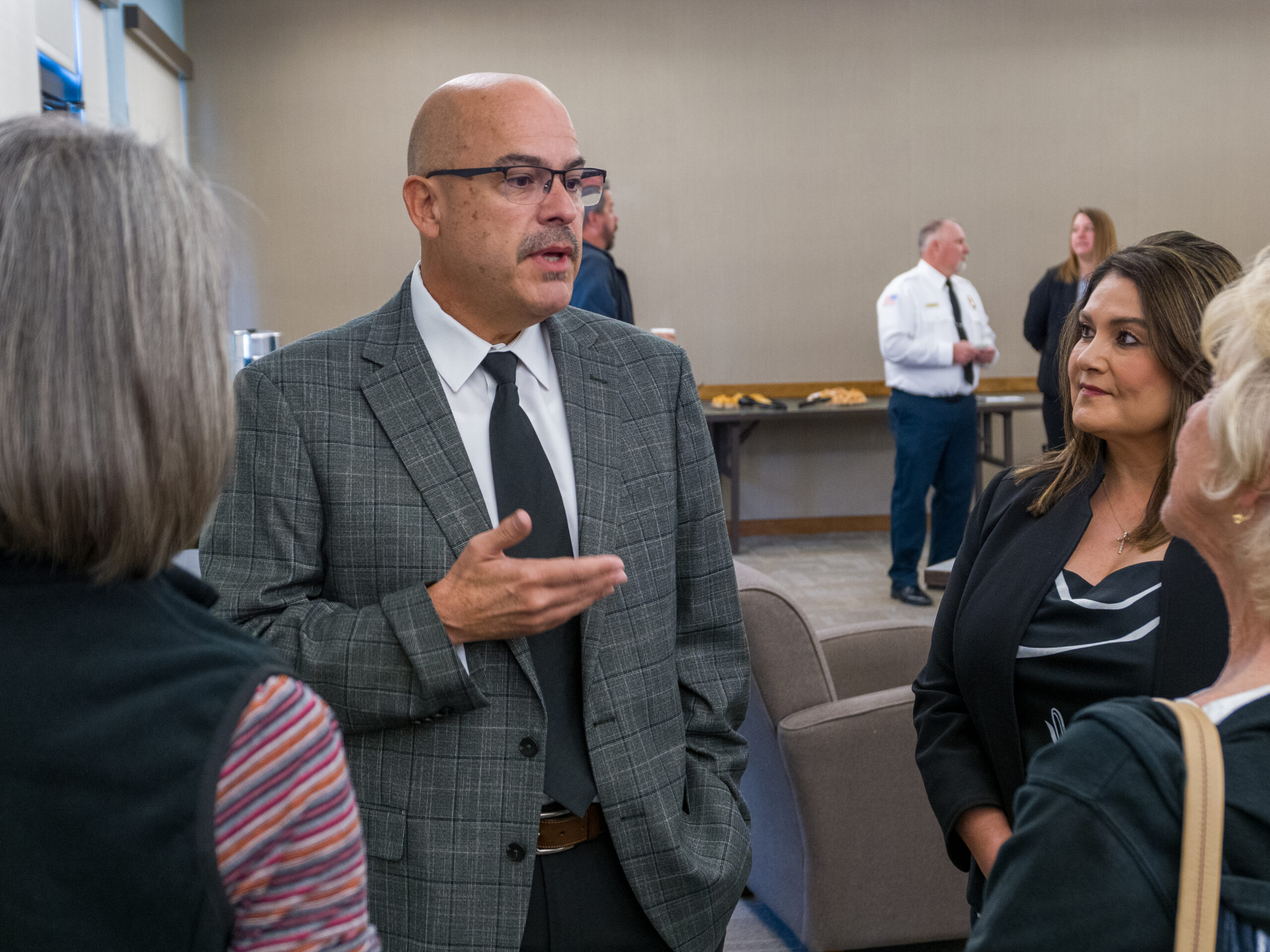Expect to see fewer cars in fewer places on the Coconino National Forest.
Forest roads, both authorized and unauthorized, currently cross more than 7,400 miles of the Coconino National Forest’s 1.8 million acres. Of those, the new Travel Management Project would close or restrict more than 4,317 miles.
Coconino National Forest Supervisor M. Earl Stewart signed the plan Sept. 28 and released it to the public on Thursday, Nov. 3.
According to the new rules, many of the roads may already be effectively closed from lack of use or due to previous road closures.
Of the remaining 3,097 miles of designated roads still open, 2,690 miles would be permitted for all motor vehicles, including ATVs and utility terrain vehicles and motorbikes, while 407 miles would be for highway-legal vehicles only, i.e., licensed and registered vehicles driven by those with driver’s licenses.
The plan adds 30 miles of roads to the forest’s transportation system. Several miles of narrow trails in Munds Park and trails for full-size 4×4 vehicles on Casner Mountain and Lower Smasher Canyon are also covered by the new rules.
While more than half the forest’s roads would be closed, Stewart wrote in his decision that 78.6 percent of the forest would be within ½-mile of a designated road — excluding areas such as the Munds Mountain and Red Rock Secret Mountain wilderness areas, where motorized travel is already restricted.
Motorized Camping
Dispersed motor vehicle camping will be allowed within 300 feet along both sides of about 580 miles of road and additionally along just one side of another 32 miles.
The original proposition would have limited motorized camping to 100 feet from the road, but Stewart said those who submitted public comments argued car campers would need more distance to avoid dust and noise adjacent to roads as well as objections to crowding. This change offers more usable corridors, without dramatically increasing campers’ impacts.
The dispersed camping corridors don’t limit where visitors camp, but only where they can drive and park. Campers who feel crowded near their vehicles can hike into forest areas away from the road.
Elk Hunting
The restrictions also limit areas where hunters could drive to retrieve elk they’ve shot. Hunters would be allowed to go off road up to one mile to legally retrieve fallen game, allowing hunters onto about 991,793 acres.
Vehicles would also be allowed up to one mile off another 135 miles of roads in Arizona Game and Fish Department game management areas to retrieve shot elk. These areas permit hunter vehicles on another 49,478 acres.
Elk retrieval wouldn’t be permitted in various fragile areas, such as those around Flagstaff which already suffer heavy use from locals and visitors, wilderness areas in the Red Rock Ranger District, and fragile grassland areas in the eastern part of the Coconino National Forest.
Hunters would still be allowed in some of these areas for “primitive” hunts, but would have to haul out elk without aid of a vehicle.
“I think it’s a good thing,” said Pat Feldt, a hunter from Vail whose company leads hunting excursions throughout Arizona and New Mexico. “There’s more game. Animals don’t like people, so they stay away from roads.”
Feldt said national forests around the country are limiting road access, and he says it’s good for hunting.
“It’s been years since I’ve driven a truck to an animal. We quarter up our animals and haul them out,” he said. “It really doesn’t affect us.”
Several agencies still disagree about potential impacts.
Arizona Game and Fish Department staff argued restricting game retrieval could affect its ability to manage big game animal populations.
Other national forests in the Southwest that the Coconino National Forest consulted argue that allowing game retrieval causes more damage to forest lands than overpopulation would.
“I understand this decision on motorized big game retrieval will not satisfy all; however, it is based on professional judgment of state and federal wildlife managers and provides for opportunities for hunters to choose different hunting experiences,” Stewart wrote.
The Center for Biological Diversity believes that too many roads remain open, according to spokeswoman Cyndi Tuell.
“Off-road vehicles in national forests are not only a blight on the landscape but also degrade the habitat of species already at the brink of extinction,” Tuell stated, citing the endangered Mexican spotted owl and Chiricahua leopard frog.
Less Traffic Over Time
The Coconino National Forest began restricting motor vehicles under President Richard M. Nixon’s Executive Order 11644, signed into effect Feb. 8, 1972.
By 1975, the U.S. Forest Service’s Southwest regional forester approved off-road vehicle restrictions to protect wildlife, fragile soils and watershed, big game animals’ winter ranges, geological resources, archaeological sites and artifacts, and wilderness values.
The last two decades have led to a greater motorized use on the forest, sometimes in areas with sensitive resources. The growth of recreation and nearby land development led the Coconino National Forest to implement more closures to prevent negative impacts. In addition, the forest has established a system of officially designated motorized trails over the last decade.
After the establishment of new federal regulations under the Travel Management Rule in November 2005, the Coconino National Forest began the Travel Management Project process in 2006 and examined more than 5,000 miles of roads and trails over the last five years.
The Travel Management Rule exempts permitted activities and would not prohibit off-road travel for collecting firewood or activities allowed by permit with terms that include off-road travel.
The release of the decision on Nov. 3 triggers a 45-day appeal period. Only those who submitted comments during the comment period from March through May 2010 can appeal the decision.
Full copies of the decision and the Final Environmental Impact Statement are now available on the Coconino National Forest’s website.
The appeal must be filed with the Appeal Deciding Officer at USDA Forest Service, Southwestern Region, 333 Broadway SE, Albuquerque, NM 87102.


